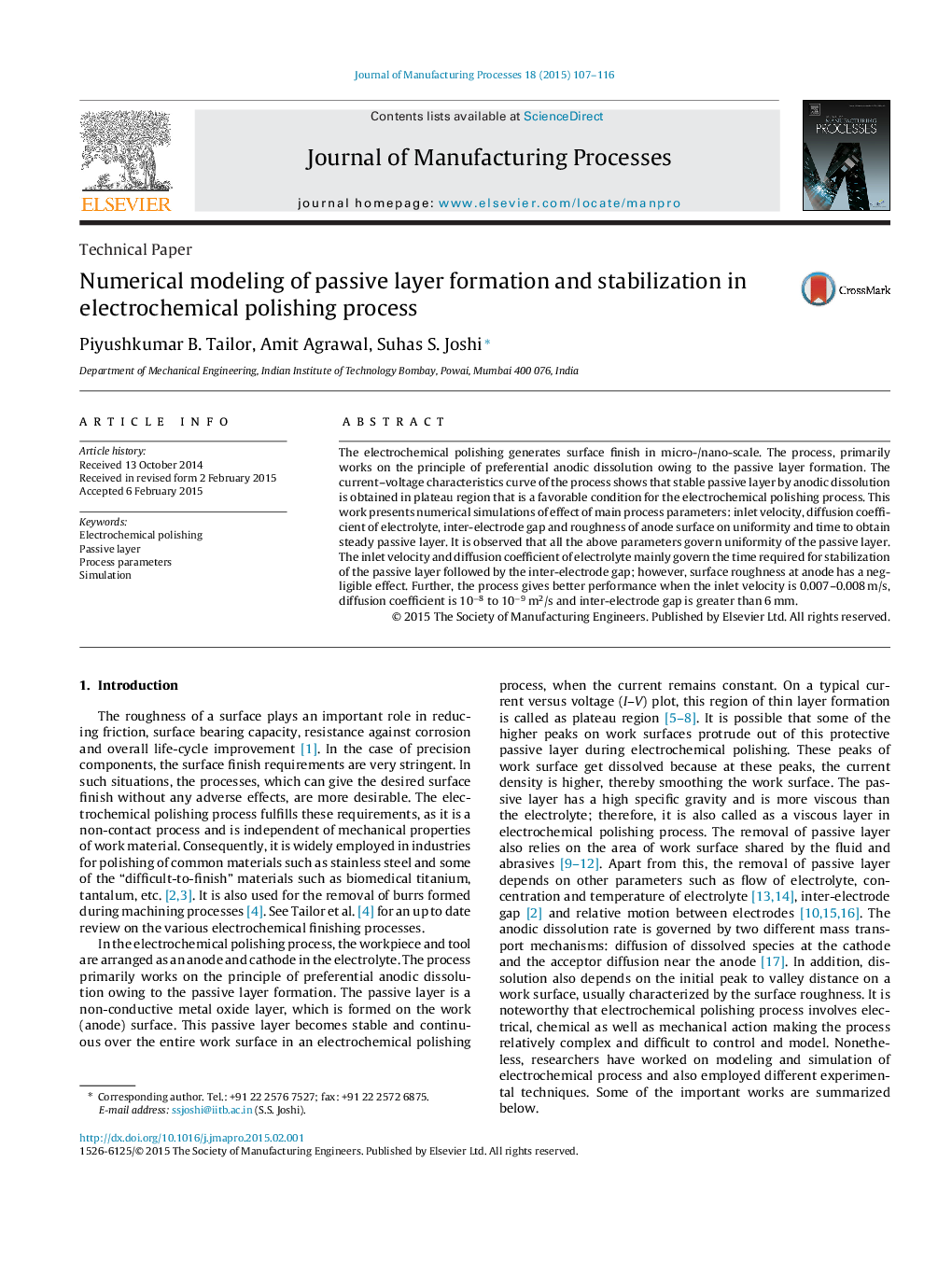| Article ID | Journal | Published Year | Pages | File Type |
|---|---|---|---|---|
| 8048191 | Journal of Manufacturing Processes | 2015 | 10 Pages |
Abstract
The electrochemical polishing generates surface finish in micro-/nano-scale. The process, primarily works on the principle of preferential anodic dissolution owing to the passive layer formation. The current-voltage characteristics curve of the process shows that stable passive layer by anodic dissolution is obtained in plateau region that is a favorable condition for the electrochemical polishing process. This work presents numerical simulations of effect of main process parameters: inlet velocity, diffusion coefficient of electrolyte, inter-electrode gap and roughness of anode surface on uniformity and time to obtain steady passive layer. It is observed that all the above parameters govern uniformity of the passive layer. The inlet velocity and diffusion coefficient of electrolyte mainly govern the time required for stabilization of the passive layer followed by the inter-electrode gap; however, surface roughness at anode has a negligible effect. Further, the process gives better performance when the inlet velocity is 0.007-0.008Â m/s, diffusion coefficient is 10â8 to 10â9Â m2/s and inter-electrode gap is greater than 6Â mm.
Related Topics
Physical Sciences and Engineering
Engineering
Industrial and Manufacturing Engineering
Authors
Piyushkumar B. Tailor, Amit Agrawal, Suhas S. Joshi,
